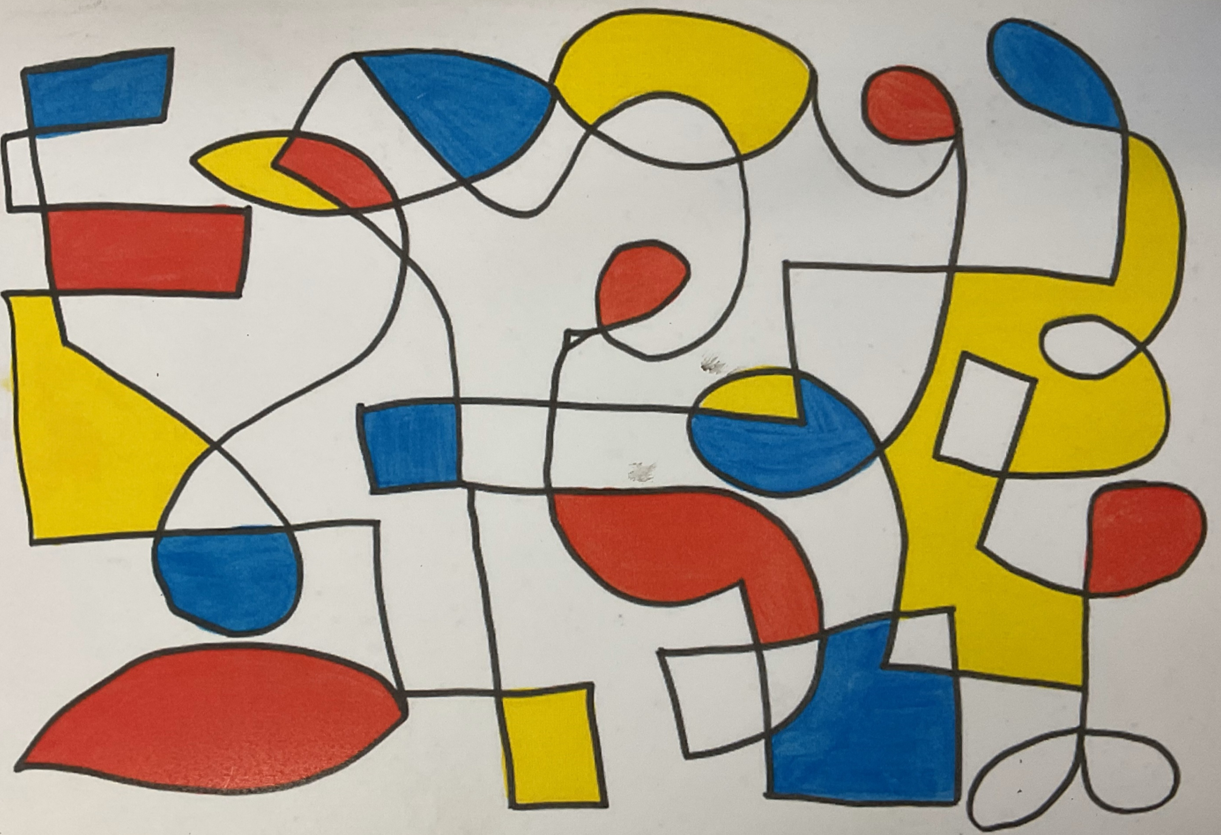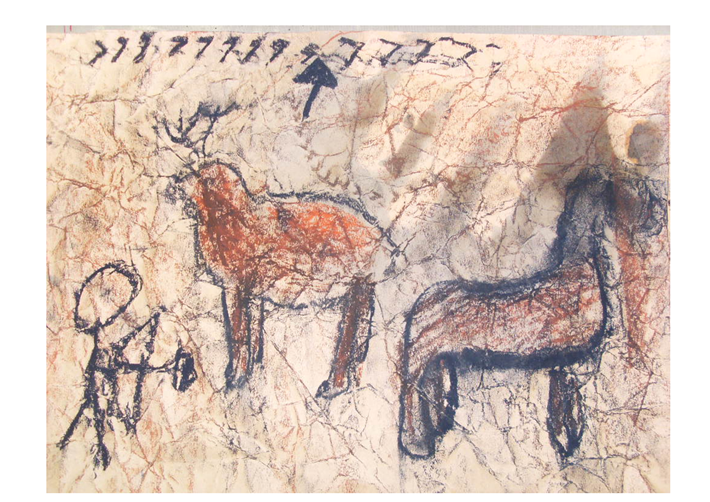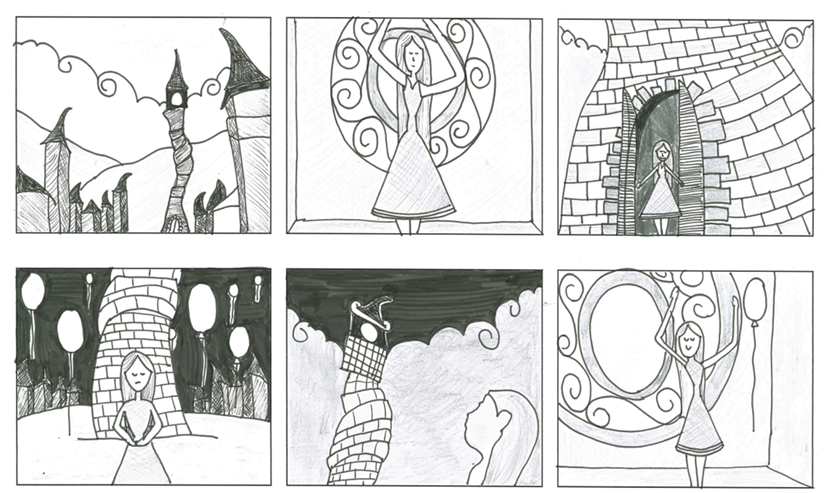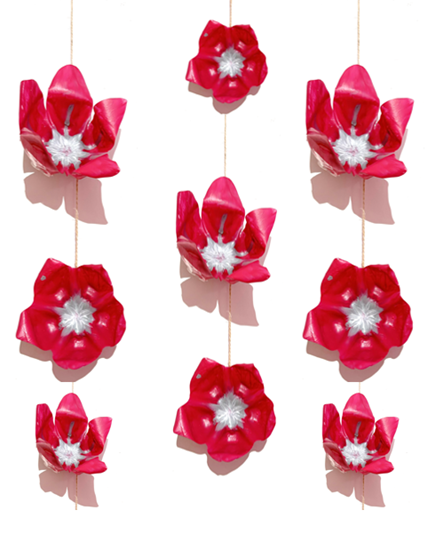Intended Outcomes
Year 1
Autumn
Line:
Colour

Spring
Form:
Tone:
Space:
Pattern:
Control of Materials:
Summer
Shape:
Colour:
Control of Materials:
Year 2
Autumn
Space:
Shapes:
Pattern:
Texture:
Control of Materials:

Spring
Tone:
Colour:
Control of Materials:
Summer
Control of Materials:
Year 3
Autumn
Colour:
Control of Materials:

Spring
Tone:
Control of Materials:
Summer
Control of Materials:
A tableau vivant is made by standing still to represent the figures in a story
Year 4
Autumn
Control of Materials:

Spring
Colour:
Control of Materials:
Summer
Tone:
Shape:
Form:
Control of Materials
Year 5
Autumn
Tone:
Control of Materials:

Spring
Knowledge to be reviewed
Line:
Colour:
Pattern:
Control of Materials:
Summer
Control of Materials:
Year 6
Autumn
Control of Materials:

Spring
Knowledge to be reviewed
Tone:
Colour:
Control of Materials:
Summer
Control of Materials
Adult Intended Outcomes
EYFS
Physical Development
In Nursery, children will:
- Use one-handed tools and equipment e.g. making snips in paper with scissors
- Use a comfortable grip with good control when holding pens and pencils
- Show a preference for a dominant hand
- Use gross motor movements to paint and make marks
- Choose the right resources to carry out their own plan
In Reception, children will:
- Develop their small motor skills so that they can use a range of tools competently, safely and confidently e.g. pencils, paintbrushes, scissors
- Begin to show accuracy and care when drawing
To meet the ELG, children will:
- Hold a pencil effectively in preparation for fluent writing and drawing, using the tripod grip in almost all cases
- Use a range of small tools, including scissors and paintbrushes
- Begin to show accuracy and care when drawing
Expressive Arts and Design
In Nursery, children will:
- Explore different materials freely, to develop their ideas about how to use them and what to make
- Develop their own ideas and then decide which materials to use to express them
- Join different materials and explore different textures
- Create closed shapes with continuous lines and begin to use these shapes to represent objects
- Draw with increasing complexity and detail e.g representing a face with a circle and use some details
- Use drawing to represent ideas like movement or sound
- Show different emotions in their drawings and paintings e.g. happiness, sadness, fear
- Explore colour and colour mixing
In Reception, children will:
- Explore, use and refine a variety of artistic effects to express their ideas and feelings
- Safely use and explore a variety of materials, tools and techniques
- Safely use and experiment with colour, design, texture, form and function
- Return to and build on their previous learning, refining ideas and developing their ability to represent them
- Create collaboratively, sharing ideas, resources and skills
- Share their creations, explaining the process they have used
To meet the ELG, children will:
- Safely use and explore a variety of materials, tools and techniques, experimenting with colour, design, texture, form and function
- Share their creations, explaining the process they have used
Drawing
Year 1
Children will:
- Experiment with line – wavy, horizontal, vertical, straight, diagonal
- Use a variety of medium to draw e.g. pencil, pen, colouring pencil, charcoal
- Use line to draw simple 2D shapes and images
- Practice shading neatly e.g. adding colour to drawing
- Draw for pleasure using their imagination and observations
Year 2
Children will:
- Begin to use a range of pencil grades – HB, B, 2B, 4B
- Begin to create a range of tones using a range of pencil grades
- Use pattern and texture – hatching, scumbling, stippling, back and forth
- Begin to control pressure to add tone to drawings
- Use simple lines and shapes to create form
Year 3
Children will:
- Use a variety of pencil grades to draw – 2H, HB, B, 2B, 4B, 6B
- Use line to add texture and pattern with increasing accuracy - hatching, cross-hatching, scumbling, stippling, back and forth, smudging
- Create a range of tones and use it for purpose – light, mid and dark tones
- Shading tones have few gaps and are neat to the edges
- Draw from imagination, observations, photos
Year 4
Children will:
- Use a range of textures in drawings for a purpose
- Use line and tone to create shape, form, light and shade using a wider range of medium - hatching, cross-hatching, scumbling, stippling, back and forth, contour, random hatching, smudging
- Become aware of proportion and scale when drawing
- Identify 2D and 3D shapes within an object when drawing from observation
Year 5
Children will:
- Draw with increased awareness of the 2D and 3D shapes that create forms and objects
- Increase in neatness and detail in drawings
- Blend tones from light to dark smoothly
- Create depth using a range of line, tone and shade
- Draw using 1 point perspective
Year 6
Children will:
- Use shadows to create mood and depth
- To accurately apply knowledge of tone and line to 3D objects/shapes
- Drawings communicate expression and emotion
- Draw from a range of perspectives – 1 point and 2 point
The second column.
Collage
Year 1
Children will:
- Manipulate the size and texture of materials e.g. cutting, tearing, scrunching, rolling, twisting
Year 2
Children will:
- Use a range of techniques to manipulate materials
- Select appropriate materials for a purpose
Year 3
Children will:
- Overlap materials to create effect
- Design a simple mosaic
- Create a mosaic e.g. using paper squares, foam tiles, square tiles
Year 4
Children will:
- Use collage as a means of collecting ideas and information
- Combine visual and tactile qualities
- Being to draw/paint on top of collage to add depth and interest
Year 5
Children will:
- Combine visual and tactile qualities to express mood and emotion
- Add collage to a painted, printed or drawn background
Year 6
Children will:
- Combine pattern, tone and shape
- Select and use materials for a purpose
3D Form
Year 1
Children will:
- Add texture using a range of tools
- Manipulate materials with purpose
- Cut, roll and coil mouldable materials e.g. plasticise, salt dough, clay
- Select an appropriate way to join materials
Year 2
Children will:
- Manipulate materials with a purpose e.g. roll, squeeze, pinch, flatten
- Know how to join modelling materials together e.g. slip, press
- Understand how to use materials and tool safely
Year 3
Children will:
- Add onto work to create texture and shape
- Use a range of tools and techniques to create texture and shape
- Work with a range of different sized materials
Year 4
Children will:
- Experiment with and combine materials/processes to create a 3D form
- Use tools to carve, add shape, texture and pattern
- Join mouldable materials and add onto to create detail
Year 5
Children will:
- Experiment with and combine materials/processes to create a 3D form
- Sculpt materials to represent a sketched design
- Use tools to carve, add shape, texture and pattern
Year 6
Children will:
- Create models on a range of scales
- Combine a range of joining techniques to create a 3D form
- Use a range of tool techniques to add texture
- Sculpt materials to represent a sketched design
Painting
Year 1
Children will:
- Name the primary and secondary colours
- Mix primary colours to create secondary colours
- Mix secondary and primary colours to make some tertiary colours
- Select the appropriate brush size to paint with
- Apply colour with a purpose
Year 2
Children will:
- Mix paint to create secondary colours and tertiary colours
- Create tints by adding white, tones by adding grey and shades by adding black
- Being to develop accuracy of painting within a space
- Use a paintbrush to add detail
Year 3
Children will:
- Predict with accuracy the colour they will mix
- Know where primary, secondary and tertiary colours fit on the colour wheel
- Use a range of brushes to create different effects
- Use a paintbrush with increasing accuracy to add detail
Year 4
Children will:
- Accurately create all the colours they need
- Explore using colour to represent emotions and mood
- Use shades and tints to create mood and feelings
Year 5
Children will:
- Use knowledge of colour to create a range of effects – analogous colours, complementary colours
- Select and use colour to portray emotions
- With precision, add detail using paint
Year 6
Children will:
- Begin to understand their own style and articulate it to others
- Use a wide range of skills and techniques in paintings
- Use knowledge of colour theory for effect
- Use a range of brush techniques to add detail and create texture
Printing
Year 1
Children will:
- Create prints using texture rubbings e.g. pavement, leaves, coins
- Print with a range of objects e.g. sponge, card, bubble wrap, found objects
- Create a repeated pattern e.g. potato printing
Year 2
Children will:
- Create a print by pressing, rolling, rubbing and stamping
- Create a block print and use it to create an image
Year 3
Children will:
- Begin to move away from simple block designs
- Select different print surfaces to create varying effects
- Combine printing techniques
Year 4
Children will:
- Create an accurate print design with fine detail
- Print onto a range of materials
Year 5
Children will:
- Print using a range of colours
- Create an accurate print design
- Print onto a range of materials to create a range of effects
Year 6
Children will:
- Create a print with texture
- Select a printing style for purpose
- Create an accurate design showing fine detail
Generating Ideas
Year 1
Children will:
- Record ideas and thoughts
- Experimentation with materials
- Use work of other artists to copy and begin to develop own ideas
- Explore ideas through practical activities
Year 2
Children will:
- Record ideas and thoughts
- Develop skills and experiment with techniques
- Develop their own artwork after studying an artist
- Create unique designs
- Draft ideas to complete a final piece
Year 3
Children will:
- Use sketchbooks to generate ideas and observations
- Express thoughts and observations with brief notes
- Make records of experiments with various materials
- Control materials to create a desired effect
Year 4
Children will:
- Use a sketchbook to plan and refine ideas
- Record ideas for materials and composition
- Develop skill and technique using various media in sketchbooks
- Manipulate composition and materials to achieve a desired effect
Year 5
Children will:
- Develop and discuss ideas through sketches
- Enhance knowledge of skill and technique using various media in sketchbooks
- Use the work of other artists to explore their own ideas
- Create ideas for purpose
Year 6
Children will:
- Record ideas and thoughts
- Experimentation with materials
- Use work of other artists to copy and begin to develop own ideas
- Explore ideas through practical activities
Evaluation
Year 1
Children will:
- Describe what they can see and like about the work of another artist, craft maker, designer
- Ask questions about a piece of work
- Explain what they like about their own work
- Use talking like an artist functional language to communicate with others
Year 2
Children will:
- Describe what they can see and like/dislike about the work of another artist, craft maker, designer
- Discuss how other artists, craft makers and designers have used colour, line pattern, shape
- Explain what they like about their own work and how they could improve it next time
- Use talking like an artist functional language to communicate with others
Year 3
Children will:
- Compare the work of different artists
- Understand the viewpoints of others and reflect on their own
- Use PERMS to evaluate their own work
- Use talking like an artist functional language to communicate with others
Year 4
Children will:
- Draw on similarities and differences between their own original artwork and that of other artists
- Use PERMS to evaluate their own work and that of peers
- Use talking like an artist functional language to communicate with others
Year 5
Children will:
- Articulate thought processes during the design process e.g. what they like/dislike, why specific techniques were chosen
- Use PERMS to evaluate their own work and that of peers
- Use talking like an artist functional language to communicate with others
Year 6
Children will:
- Describe what they can see and like about the work of another artist, craft maker, designer
- Ask questions about a piece of work
- Explain what they like about their own work
- Use talking like an artist functional language to communicate with others
